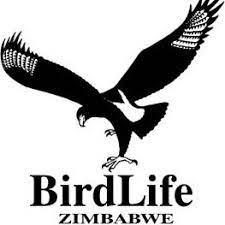IMPORTANT BIRD AREAS
IBA: ZZ005 Batoka Gorge
PARTIALLY PROTECTED
GLOBAL IBA (A1)
17°58’S; 26°14’E
c. 12 000 ha
SITE DESCRIPTION
After crashing over the spectacular Victoria Falls, one of the natural wonders of the world, the Zambezi River hurtles through many spectacular gorges on its way to the quieter waters of Lake Kariba. From the falls (17°56’S; 25°52’E), located at c. 900 m a.s.l., the Batoka Gorge system winds downstream for c. 120 km, to Sidinda Island (18°00’S; 26°34E) just west of the Matetsi River, where the plateau drops below 600 m a.s.l. Along this stretch, the river has carved through the basalt lava rocks, creating a spectacular 140-m-deep gorge, characterised by cliffs and scree. The landscape and views are stunning.
The Batoka Gorge system lies in Matabeleland North province, almost entirely within the Hwange Communal Land. The flat plains above the gorge receive an average rainfall of c.700 mm p.a. and support Mopane Colophospermum mopane woodland. Riparian forest occurs patchily along the Zambezi and its tributaries, with Diospyros mespiliformis, Trichilia emetica and Rhus quartiniana dominating. The screes are clothed in thick mixed woodland often dominated by Triplochiton zambeziacus, Commiphora spp., Entandrophragma spp. and Sterculia spp., interspersed with grassland. Temperatures can be stiflingly hot during summer, reaching 42° C; they are only marginally cooler in winter. Minimum temperatures occasionally drop to zero in Victoria Falls town but not in the gorges; frosts are unknown.
BIRDS
The Batoka Gorge was known as a haven for Taita Falcon Falco fasciinucha, but it has declined and its current status is thought to be threatened. In addition, about 18 pairs of Peregrine Falcon Falco peregrinus, and another 34 raptor species (including owls) occur in the gorge, including Bat Hawk Macheiramphus alcinus. At least four pairs of Black Stork Ciconia nigra nest in the gorge. A rafting survey counted 103 Rock Pratincole Glareola nuchalis. No checklist of birds exists for this section of the Zambezi River, and it probably holds many other species and populations of global significance. It must hold significant populations of many Zambezian biome species, but which species are not yet known.
CONSERVATION ISSUES
For about 12 km below the falls, the gorge is in the Victoria Falls National Park; thereafter it is in communal land. There is virtually no usage of the gorge itself, except for low-impact water sports along the river. The area around Victoria Falls was declared a World Heritage Site in 1989. The overriding threat to this entire system is the proposed Batoka Dam, with the wall being built below the Moemba Falls (17°56’S; 26°06’E). The dam wall would be 196 m in height, and would produce a lake of about 50 km in length flooding almost the entire IBA. The lake would severely constrain the breeding opportunities for cliff-nesting raptors.
In addition, if Batoka Gorge held a lake rather than a rushing river, then tourism to the site is bound to increase, with greater disturbance (upstream) to the remaining cliff-nesting species. The world’s top ‘white-water’ rafting and kayaking experiences are to be had in these gorges and one could anticipate a decrease in this type of tourism should the proposed dam go ahead. In the meantime, the lip of the gorge downstream of the falls, on the Zimbabwe side, is a minefield, and wildlife such as Buffalo are regularly the unfortunate victims of a misplaced footstep.
Globally threatened
Taita Falcon – Breeding (pairs) – unknown | Total Numbers – unknown
Other important populations
Rock Pratincole – Total Numbers – 103 (max)
